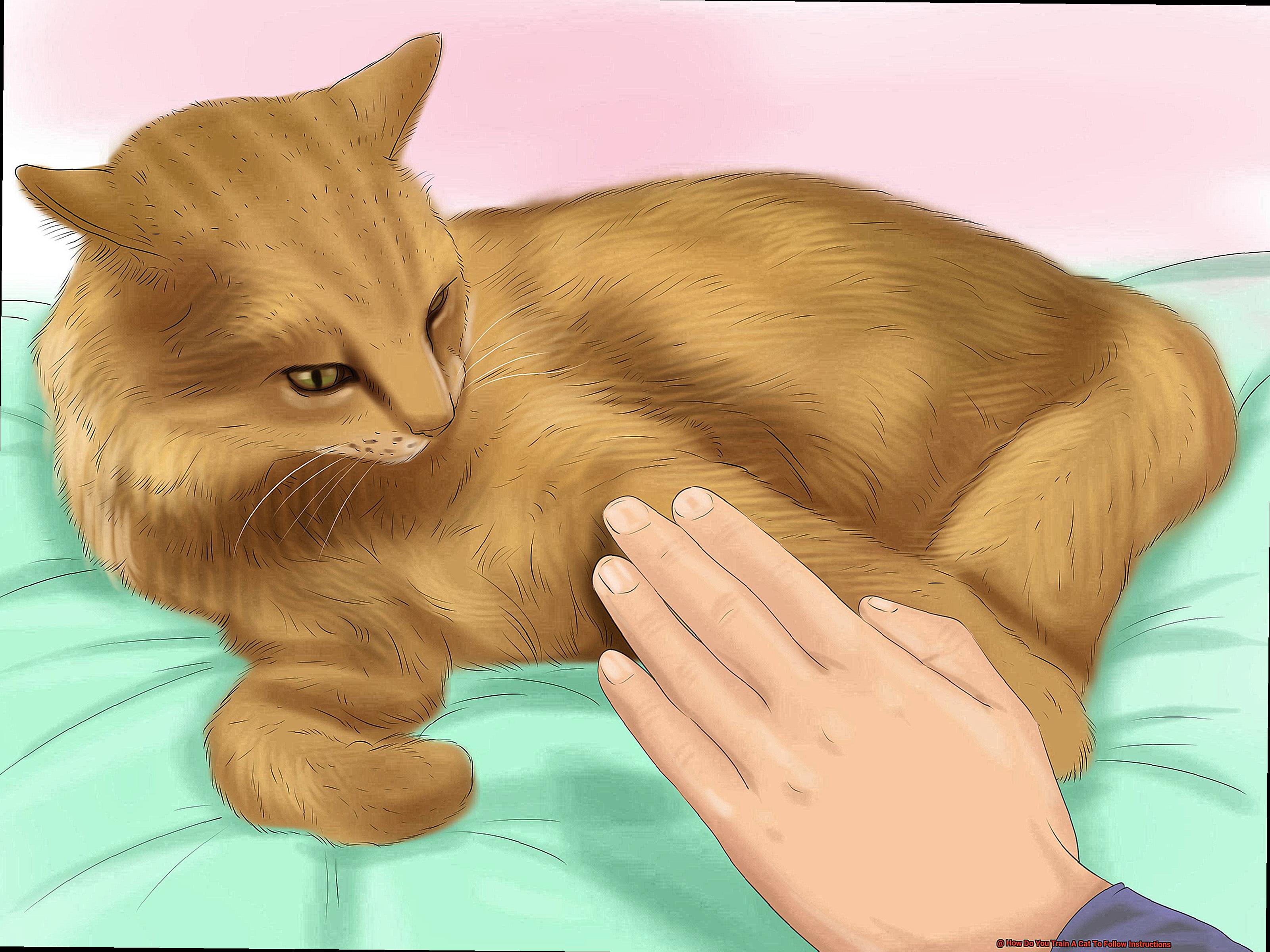Cats are more than just cute and cuddly creatures. They have a reputation for being independent and aloof, but that doesn’t mean they can’t be trained to follow instructions. In fact, training your feline friend can be a fun and rewarding experience for both you and your pet.
If you’re wondering how to train a cat to follow instructions, you’re not alone. Many people think it’s impossible or too difficult to train cats, but with the right approach and plenty of patience, it’s definitely doable. And the best part? You don’t have to stress yourself or your cat out in the process.
Teaching your cat simple commands like come, sit, shake, or high five is a great way to start building a stronger bond with your furry companion. It also helps keep them safe and well-behaved. But where do you begin?
In this blog post, we’ll explore some of the most effective ways to train your cat to follow instructions. From understanding their behavior patterns to choosing the right reward system and using positive reinforcement techniques – we’ve got you covered.
Whether you’re a seasoned cat owner or new to the game, there’s always something new to learn about training your feline friend. So let’s dive in together and discover how we can better communicate with our cats.
Establishing a Bond of Trust and Respect
Training a cat can be a challenging task, but it’s not impossible. Developing a bond of trust and respect with your feline friend is the first step towards effective training. Here are some steps you can take to build a strong relationship with your cat.
Create a Comfortable Environment
Cats are independent animals who thrive in comfortable environments that provide them with a sense of security. Ensure your cat has a cozy bed, plenty of toys, and a scratching post. Keep their litter box clean, and make sure they have access to fresh food and water at all times.
Spend Quality Time with Your Cat
Spending quality time with your cat is crucial in building trust and respect. Play with them, pet them, and talk to them. Offer treats and praise when they behave well. This positive reinforcement will help your cat associate you with good experiences.
Learn Your Cat’s Body Language
Cats communicate through their ears, eyes, tail, and vocalizations. Learning to read their signals is vital in understanding their needs and emotions. For example, if your cat’s tail is puffed up, it may be a sign that they are feeling scared or threatened.
Use Positive Reinforcement
Positive reinforcement involves rewarding your cat for exhibiting desired behavior. Reward them with treats, toys, or praise when they perform the behavior you want to encourage. For instance, if you want to teach your cat to come when called, call their name and reward them with a treat when they come to you.

Be Patient and Consistent
Building a bond of trust takes time and patience. Don’t rush the process or get frustrated if your cat doesn’t respond immediately. Be consistent in your interactions with your cat and give them the time they need to feel comfortable around you.
Identifying Desired Behaviors
Fear not, because training your cat can be a fun and rewarding experience for both you and your feline friend. One of the most important steps in cat training is identifying desired behaviors. This involves determining the specific actions or habits that you want your cat to exhibit and rewarding them when they do so. Here are some tips for identifying desired behaviors:
Start Small and Be Realistic
It’s essential to start with one behavior at a time when identifying desired behaviors. This allows you to focus on shaping that behavior before moving on to the next one. For instance, if you want your cat to stop scratching furniture, start by rewarding them when they use a scratching post instead.
Take Your Cat’s Personality into Account
Each cat has their own individual personality and preferences. Some cats may respond better to certain types of rewards or training methods than others. For example, some cats may be more motivated by treats, while others may prefer playtime or extra attention. Identifying what motivates your cat is key to successful training.
Avoid Reinforcing Unwanted Behaviors
While it’s important to focus on desired behaviors, it’s also crucial to avoid reinforcing unwanted ones. This means withholding rewards for behaviors like biting or scratching and redirecting their attention towards more appropriate behavior instead.
Consistency is Key
Training a cat can be a lengthy process that requires patience and consistency. It’s vital to set realistic expectations and understand that progress may be slow at first. However, with consistent training and positive reinforcement, your cat will eventually learn the desired behaviors.
Using Positive Reinforcement Techniques
Positive reinforcement techniques are the answer. These methods are not only effective but also create a more enjoyable experience for both you and your feline friend.
Cats respond well to positive reinforcement because they are motivated by positive outcomes, such as treats or praise. Clicker training is one of the most popular positive reinforcement techniques. This method involves using a clicker and treats to reward desired behavior. The clicker is used to mark the desired behavior, and the treat is given immediately after the click. This helps your cat associate the sound of the click with the reward, making it more likely to repeat the behavior.
Another technique that works well is target training. This involves using a target stick or your finger to guide your cat towards a desired behavior. When your cat successfully completes the desired behavior, they are rewarded with treats or praise. Over time, your cat will associate the target with the reward and will be more likely to follow instructions.
Using positive reinforcement techniques requires patience and consistency. It may take time for your cat to learn a new behavior, so it’s important to be patient and consistent in your training efforts. Additionally, it’s crucial to use high-value treats that your cat enjoys as a reward for desired behaviors.
Rewards for Good Behavior
But with the right approach, it can also be a rewarding experience for both you and your furry companion. One of the most effective methods for training cats is through positive reinforcement using rewards for good behavior.
So, what makes rewards such a powerful tool for training cats? Let’s explore some key points:
- Immediate Gratification: The power of rewards lies in their immediacy. Giving your cat a treat or some affection right after they exhibit good behavior helps them associate the behavior with the reward. This encourages them to repeat the behavior in the future.
- Personal Preferences: As every cat is unique, it’s essential to understand what type of reward motivates your feline friend. Some cats are food-motivated and respond well to treats, while others may prefer playtime or cuddles. Experimenting with different types of rewards can help you understand what works best for your cat.
- Consistency: Consistency is crucial when it comes to rewards-based training. Keeping the rewards consistent helps reinforce positive behavior and ensures that your cat learns what is expected of them. Gradually phasing out rewards over time as the behavior becomes more consistent is also important to encourage long-term results.
- Humane Methods: Punishment-based training methods can be harmful to your cat’s mental health and overall well-being. Positive reinforcement using rewards for good behavior is a humane way to train cats and helps build trust between you and your pet.
Consistency in Training Sessions
Training a cat can be a fun and rewarding experience, but it requires consistency to be successful. Consistency is essential because cats thrive on routine, and by establishing a regular training schedule, you can help your feline friend develop good habits and reinforce positive behavior. Here are some tips to keep in mind when it comes to consistency in cat training:
Establishing a routine is critical. You can set up daily or weekly training sessions where you work on specific behaviors or tricks. It’s essential to stick to this schedule as much as possible to help your cat establish a routine.
During training sessions, staying calm and patient is paramount. Cats can be easily distracted, so it’s important to keep their attention focused on the task at hand. Use treats or toys as rewards for good behavior and keep the session short and sweet.
It is important to tailor your approach to your cat’s personality because every cat is unique. Some cats may respond better to food rewards, while others may prefer praise and affection. Understanding your cat’s likes and dislikes will help you tailor your training approach accordingly.
Choosing the right environment for training sessions is crucial. Pick a quiet, distraction-free area where your cat can focus on the task at hand. Avoid sudden changes in the environment that could disrupt the training process.
Avoiding Punishment or Negative Reinforcement
As a fellow cat lover, I’m here to share some tips on how to avoid punishment or negative reinforcement and use positive reinforcement to train your furry friend.
Why avoid punishment or negative reinforcement? Well, cats are sensitive creatures and can become fearful or anxious if they feel threatened or punished. This can lead to unwanted behaviors and make training even more difficult. Instead, try positively reinforcing good behavior with treats, praise, and playtime.
Here are some practical tips to get you started:
- Provide alternatives: If your cat is scratching the furniture, provide them with a scratching post or pad and reward them for using it. If they’re jumping on counters, give them a designated space to climb and observe.
- Be consistent: Consistency is key when it comes to training your cat. Make sure everyone in the household is using the same commands and following the same rules. This will prevent confusion and make training more effective.
- Be patient: Cats have unique personalities and may not respond to training in the same way. Be patient, flexible, and don’t get discouraged if progress is slow. With time and effort, most cats can learn new behaviors through positive reinforcement.
- Use treats wisely: Treats are a great way to reward your cat for good behavior, but use them sparingly and choose healthy options. Overfeeding can lead to other health issues.
Tips to Make Cat Training Easier
Unlike dogs, cats are more independent and may not always follow instructions. However, with the right approach and some patience, you can make cat training easier and more effective. Here are some tips to guide you:
Use Positive Reinforcement
Positive reinforcement is a powerful tool for training cats. Rather than punishing your cat for bad behavior, reward them with treats, toys, or praise when they exhibit good behavior. This will motivate them to repeat the behavior in the future.
Keep Training Sessions Short and Sweet
Cats have short attention spans and may lose interest quickly. To keep them engaged, keep training sessions short and sweet, no more than 5-10 minutes at a time. This will help your cat stay focused and motivated.
Start with Basic Commands
Before moving on to more complex commands, start with basic ones such as “sit” or “come.” Once your cat has mastered these commands, you can progress to more challenging ones.
Be Consistent
Consistency is key when it comes to cat training. Use the same command words and gestures every time you train your cat. This will help them understand what you want them to do and avoid confusion.
Use Clicker Training
Clicker training is a popular method of cat training that uses a clicker device to signal to your cat when they have done something right. The click is immediately followed by a treat or reward, which reinforces the desired behavior. With consistent use of the clicker, your cat will begin to associate the sound with good behavior.
Common Mistakes to Avoid When Training a Cat
As an expert in this field, I have compiled some essential research notes to help you avoid these pitfalls and ensure successful training.
Understanding your cat’s natural behavior is critical. Cats are independent creatures who need motivation to learn new behaviors. Using punishment or negative reinforcement can make them fearful or anxious, which can make them less receptive to training. Instead, positive reinforcement is the way to go. Rewarding good behavior with treats or praise will encourage your cat and make them more willing to learn.
Consistency is key when it comes to training a cat. Cats thrive on routine and repetition. Thus, establishing a consistent training schedule and sticking to it is vital. Inconsistency can confuse the cat and make them less likely to follow instructions.
Using inappropriate training techniques is another mistake owners often make. Cats are not like dogs and cannot be trained in the same way. For instance, using a leash or collar to walk a cat can cause stress and harm. Consider using a harness specifically designed for cats instead.
Finally, expecting too much too soon is a common mistake when training a cat. Cats learn at their own pace, so it’s important to be patient and take small steps towards the desired behavior. Rushing or expecting too much can lead to frustration for both you and your feline friend.
To summarize, avoiding these common mistakes when training your cat can result in success and a happy, well-behaved companion. Remember to use positive reinforcement, establish a consistent training schedule, use appropriate techniques, and be patient with your feline friend. Here are some sub-topics that you should consider while training your cat:
- Understanding your cat’s body language
- Training your cat to use the litter box
- Tips for socializing your cat
- Helping your cat to stop scratching furniture
- Teaching your cat to come when called
Conclusion
In conclusion, training your cat to follow instructions is a task that requires patience, dedication, and the right approach. By establishing a bond of trust and respect with your feline friend, you can teach them simple commands like come, sit, shake or high five. Spending quality time with your cat in a comfortable environment and learning their body language are essential steps towards effective training.
When it comes to identifying desired behaviors, starting small and being realistic is key. Take your cat’s unique personality into account while avoiding reinforcing unwanted behaviors. Using positive reinforcement techniques such as clicker or target training can make the process more enjoyable for both you and your furry companion.
Rewards for good behavior are a powerful tool in cat training. Immediate gratification, personal preferences, consistency, and humane methods make rewards an effective method for positively reinforcing good behavior. Consistency in training sessions is also crucial for success. Establishing a routine, staying calm and patient during sessions while tailoring your approach to your cat’s personality can lead to positive results.
It’s important to avoid punishment or negative reinforcement when it comes to cat training. Instead of punishing unwanted behaviors, provide alternatives while being consistent in your approach and patient with progress. Use treats wisely as part of positive reinforcement techniques.







